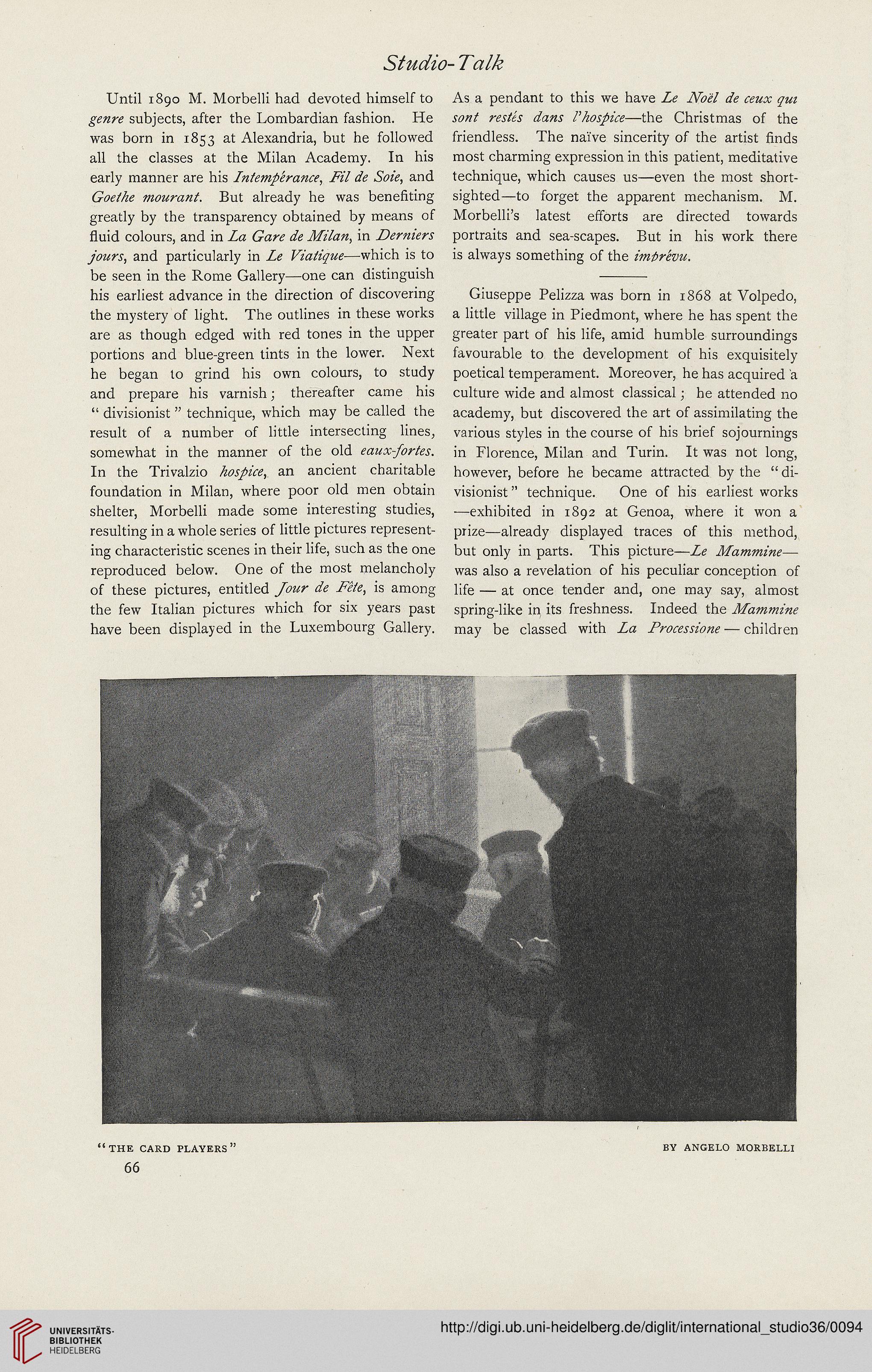Until 1890 M. Morbelli had devoted himself to
subjects, after the Lombardian fashion. He
was born in 1853 at Aiexandria, but he foltowed
ali the classes at the Milan Academy. In his
eariy manner are his ZTzZTT^^T-rrTrff, AiV Z? and
But already he was benehting
greatiy by the transparency obtained by means of
Huid colours, and in Za Zs AZV<?77, in
and particularly in Z^ WhZyM<?—which is to
be seen in the Rome Gahery—one can distinguish
his eariiest advance in the direction of discovering
the mystery of light. The outiines in these works
are as though edged with red tones in the upper
portions and blue-green tints in the lower. Next
he began to grind his own colours, to study
and prepare his varnish; thereafter came his
" divisionist " technique, which may be calied the
result of a number of iittle intersecting lines,
somewhat in the manner of the old
In the Trivaizio an ancient charitabie
foundation in Miian, where poor old men obtain
sheiter, Morbehi made some interesting studies,
resuiting in a whoie series of iittie pictures represent-
ing characteristic scenes in their life, such as the one
reproduced beiow. One of the most meianchoiy
of these pictures, entitied yiw Z? ZF/g, is among
the few Italian pictures which for six years past
have been dispiayed in the Luxembourg Galiery.
As a pendant to this we have Zd< Wi?// Z<s
.w;?/ —the Christmas of the
friendiess. The na'i've sincerity of the artist finds
most charming expression in this patient, meditative
technique, which causes us—even the most short-
sighted—to forget the apparent mechanism. M.
Morbelli's iatest efforts are directed towards
portraits and sea-scapes. But in his work there
is always something of the
Giuseppe Peiizza was born in 1868 at Volpedo,
a little village in Piedmont, where he has spent the
greater part of his life, amid humble surroundings
favourable to the development of his exquisitely
poetical temperament. Moreover, he has acquired 'a
culture wide and almost classical; he attended no
academy, but discovered the art of assimilating the
various styles in the course of his brief sojournings
in Florence, Milan and Turin. It was not long,
however, before he became attracted by the " di-
visionist" technique. One of his earliest works
—exhibited in 1892 at Genoa, where it won a
prize—already displayed traces of this method,
but only in parts. This picture—Z^ AZ!7%?7M'7M—
was also a revelation of his peculiar conception of
life — at once tender and, one may say, almost
spring-Iike in its freshness. Indeed the ZZ:7777772'77<'
may be classed with Za — children




